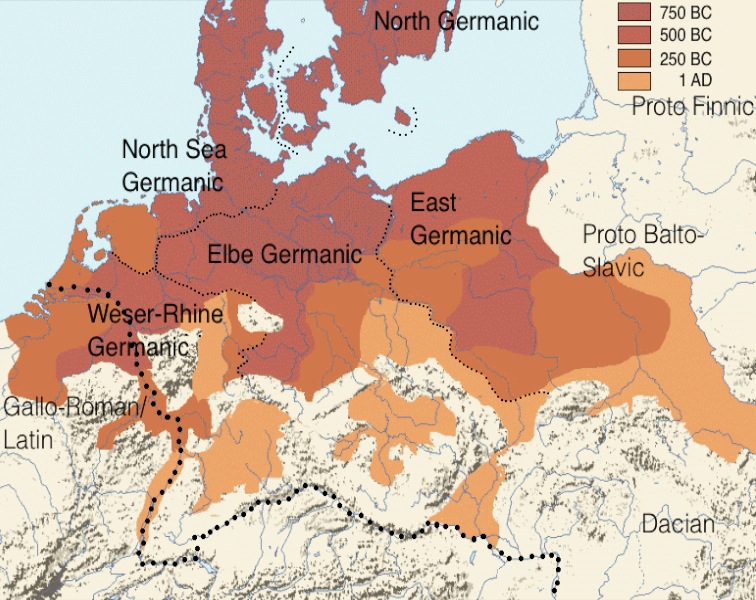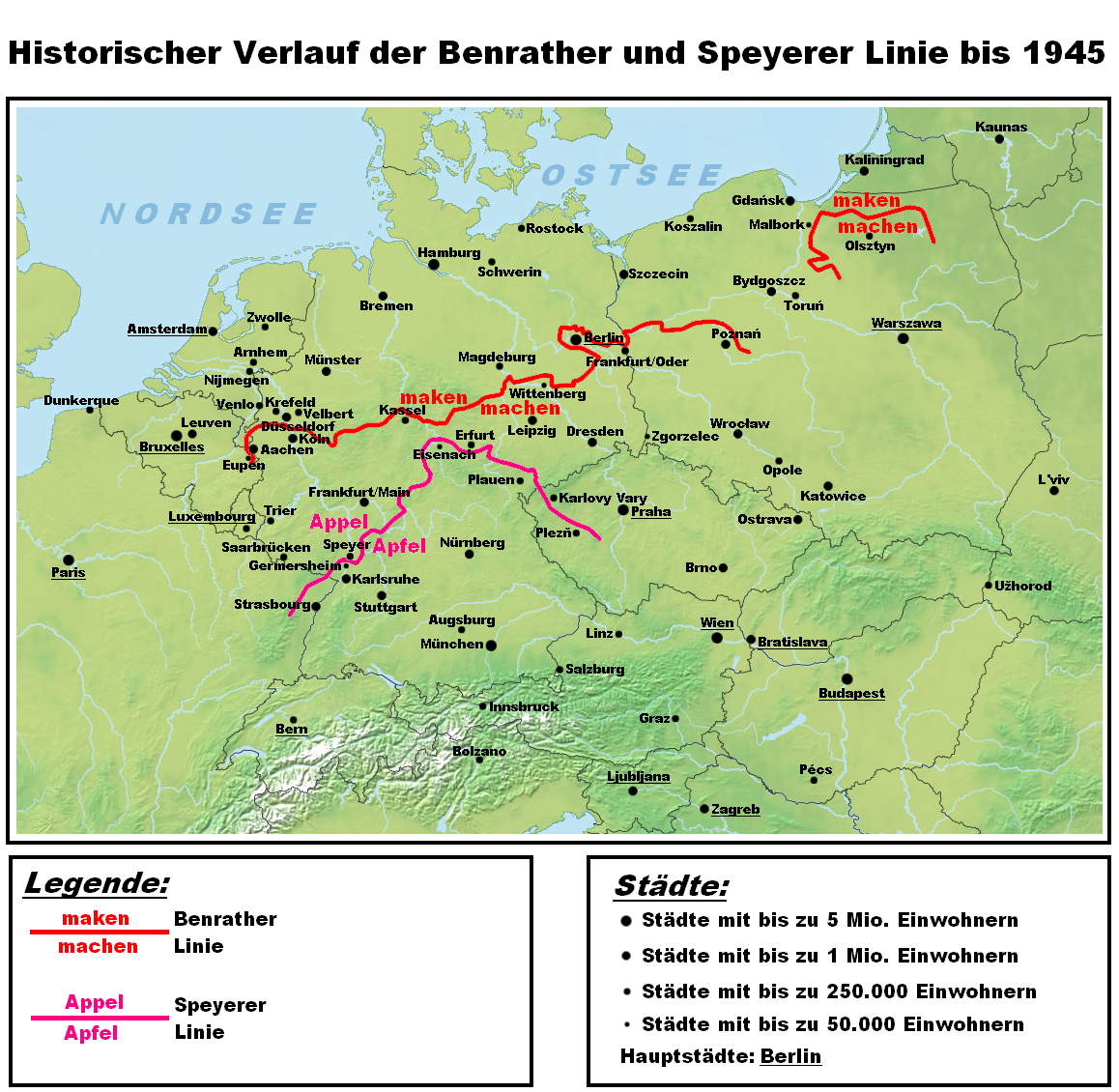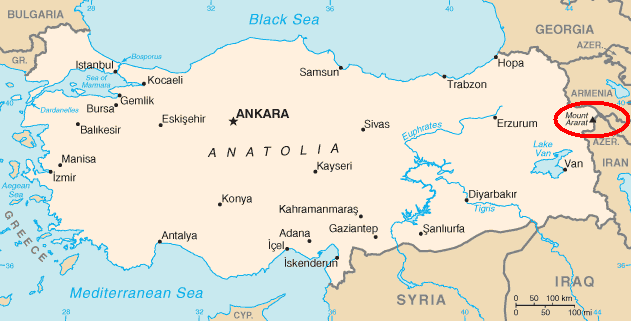Old cultures
The Neandertalers:
The oldest human species, as far as we know, are the Neanderthaler (Homo neander-thalensis). They disappeared around 40,000 years ago, around the time that the current people (Homo sapiens) appeared in Europe. About the culture of the Neanderthals is little known. The oldest finds, so far, are two stone circles in a French cave near the town Bruniquel which are dated at 176,500 years old. The large circle has a diameter of about 7 meters and the smaller inner circle about 2 meters.
The room in wich the stone circles lie, deep below the surface, is about 300 meters from the entrance. To build these circles the Neanderthalers had to dislodge about 2.2 tons of stalactite from the walls .
Homosapiëns:
In Siberia 20,000 years old huts from mammoth bones were found. The famous stone circle at Stonehenge is “only” about 4,000 years old like the 54 small dolmens in the Netherlands.
Of these both (oldest) cultures in Europe (yet) virtually nothing is known!
Later cultures
Floodings
Probably there have been two “floodings” (one larger and one smaller?). In some old cultures they are mentioned.
So the discussions about these floods, like which was de first one and had what consequences, wich was the biblican one, etc. can be ignored in this matter. These floodings are likely and a good explanation for the dissemination of the cultures.
First floodings:
Geologically, so over a rather extended time, the crust of the earth is instable. As Africa moves to the north and pushes, for example, Italy and Spain into Europe. As a result (the raffling of the crust between the two peninsulas and Europe) mountains like the Alps and the Pyrenees were formed.
The slow moving of Africa to the north made the Strait of Gibraltar got closed. The inflow of seawater from the Atlantic was that way stopped. So there evaporated more water from the Mediterranean then the rivers brought in. That ment the waterlevel of the Mediterranean declined steadily.
At a certain moment the Iberian peninsula “nodded” and the Strait of Gibraltar opened again which ment a huge tidal wave was produced and large floodings over the lower lands was caused. In that way a big flow through the Darnanellen, the sea of Marmora and through the Bosphorus into the Black Sea was coused, so the level of the Black Sea was lifted (became a bit saltier) and flooded the lands around it, forcing tribes living there to move.
First People:
Around the year 8,000 BC, in the fertile Cresent (in the middle east) the old Sumerian language grew into parts. So, among others, there were the Mioan brance on Crete and the Hattic one in Anatolia (todays Turkey). By the first flooding the polpulation of the Hatti group was driven in waves from Turkey to the west. Around 5,000 BC tribes reached the Netherlands. (This is a thought, with some foundations in support of it is developed by prof. P. Schrijvers of the university of Utrecht).
Archaeological the dolmens in eastern Anatolia show a kind of kinship with those on the Iberian peninsula. The distribution of these structures (from the Iberian peninsula) to the north of Europa exhibits a smooth transition in contruction methods that might be related to the locally available materials. It is likely this explaines the arrival of the “Hunnebedbouwers”, the “Standvoet-” and the “Klokbeker-” cultures in the Netherlands. A classification by languages is not possible becouse none of the languages of these cultures survived.
Second floodings:
The Aegean sea was probably, in ancient times, an area that in later times was called Atlantis. In that area there were large vulcanos. On a bad day vulcanoes exploded and coused massive tidal waves. The blown up earth and lava darkened the sky, caused fires and made the nature like, animals grasshoppers, birds, etc. upset (the Egyptian plagues?). They also made the Black Sea flooding over her shores again. By the great rising of the level of that sea (that also became saltier) the people (tribes) living on the shores were forced to leave, in waves, their homelands along the black sea.
Second people (the bible):
The bible speaks of a flood and the ark in wich Noah and his family survived that flood. That ark stranded on the mountain Arrat. Noahs family consisted, at that moment, of:
* Noah and his wife Emzara (with the nickname Na’ama meaning the lovely one).
* Their eldest son Jafeth and his wife Adataneses, their descendants moved north and populated Europe and Asia (the Jamites, the Indo-Europeans).
* Their middle son Sem with his wife Sedeqetelebab, their descendants populated the middle east (the Semites).
* Their youngest son Ham with his wife Næltamauk, their decendants went into Africa (the Hamites).
Note:
Besides the bible also the Gilgamesh-epos tells about the flooding.
Second people: (the Indo-Europeans):
On a basis of kinship, the forming of groups is possible. The most importand language groups are:
Indo-Europeans:
Eastern group: Southern group: Western group:
Sanskrit, Persian, etc. Greek, Celtic, Italic. Germanic, Baltic, Slavian.
 Indo- European languages.
Indo- European languages.
(Albanian, Basque, Estonian, Finnish, Hungarian and Turkish are not indo-European)
For northern Europe the northern language families are important:
Germanic: Baltic: Slavonian:
Eastern Germanic†, Prussian†, Eastern Slavic,
Northern Germanic, Latvian, Western Slavic,
Western Germanic. Lithuanian. Southern Slavic.
Germanic languages
A comparison of some Germanic languages.

Germanic languages in the first century A.D.
East-Germanic†
* This family included a number of cultures wich are now all extinct, the:
Bastamen, Burgundians, Goths, Heruli, Lombards, Rugii, Skiren and the Vandals.
* In addition the Goths were then disintegrated in the (now exitinct):
Gepids, Greutingen, Crimean Goths, Ostrogoths, Tervingi and Visigoths.
Echoes from two East-Gothic languages reached (writen) modern times:
Gothic†
Of these languages is mainly Gothic† linguistic important becouse it is in written form aviable to us in the translation of the new testament by their bishop Wulfila (Wolfson or Wulfsen). That bishop previously designed letter symbols becouse he did not want to write the scripture in the pagan runes. His brother gave for the same reason to the east-slavs their (current) script. (In this the names of the brothers may be got interchanged).
Crimean Gothic†
Around the year 250 the Ostrogoths arrived in the south of the Ukraïne and and on the Crimea. Although their Germanic language already was disapearing, a Dutch diplomate
(from Antwerp) in the 18th century could compose a list of words wich he, by his knowledge of the dutch language, understood. His name is Ogier Ghiselijn Busbecq. (He also brought the tulip from Persia to the Netherlands).
Note:
It is also a tradition to regard the Lombards as East Germans but there are also newer insights that host them to the West Germans. Their West Germanic should than by contacts and mixing have become Lombardian. (like German in the northern Alps became High German.
North-Germanic
These are the Scandinavian languages:
Alandic, Danish, Farœrse, Norn, Icelandic and Swedish.
The old Icelandic of both Edda (actually old Norse) is linguistically very important becouse the two Edda are the oldest writen texts that survived in a North Germanic language.
West-Germanic
This group consists of: Afrikaans, Dutch (Diets), English, Frisian, High German, Lower German, Surinam, and Yidish.
* Diets was the language (the contiguous dialects) spoken along the seacoasts from northern France to Danzig. It disintegrated into: Middle Dutch, High German, Low Ger-man and Yiddish.
* Afrikaans, (South-Africa, Namibia) New (present) Dutch (Belgium & Netherlands) and Surinamian (South-America) developed from Middle Dutch (Diets).
A classification for languages
A Grid
Old pedigrees are about men and especially along the line of the oldest surviving son in the succession. The infant mortallity mortality rate was high and the learning period (ie until knighthood) was not very healty. So the number of generations per century was rather low, usually only three. Strongly simplified it creates an image of “apprenticeship” of about 33 years, a productive period until 66 years and after that old age.
Parents had little time (three generations had to be fed!). So, in old times, the bringing up of the new generation was greatly in the hands of the grandparents. This way of life ment that things like language, culture and skills could only change a tittle bit in one century. Therefore in history periods of four centuries are choosen.
Pickets:
That periods have to be linked to the actual history. Important dates are nice marks. So here is opted for the arrival of the Germanic tribes (450 B.C.), the arrival of the Romans, (50 B.C.) the fall of the Roman Empire (350), the end of the Frankish period (750), the end of the House of Holland (1150), the beginning of the 80-years war for freedom(1550) and the end of World War II (1950).
The dates here are only apporoximate! The aim is to determine periods of devolopment. This global format does not want to replace intelect but only to support the structural (schematic) memmory. So a Classification for the languages can be given as follows:
Schedule (pickets):
I. befor 450 B.C. Proto-Germanic. II. 450 B.C. – 50 B.C. Ancient Germanic.
III. 50 B.C. – 350 A.D. West Germanic. IV. 350 A.D. – 750 A.D. Old lower Franconian.
V. 0750 – 1150 Old Dutch. VI. 1150 – 1550 Middle Dutch.
VII. 1550 – 1950 New Dutch. IIX. after 1950 Modern Dutch.
(Old Dutch is sometimes split into western- and eastern Lower Franconian).
(Modern Dutch is documented in “green booklets”. They are publised every few years).
A history of Dutch
During christianisation in the Netherlands, so in all provinces, the catholic monks erased almost all written pagan information. Only on a few grave gifts (like helmets, swords and shields) some words (in rune script) survived and reached the modern age.
The oldest known West-Germanic word is “wad“. It is used in a letter written by a Greek merchant (Pytheas of Massalia), seeking the origin of amber (On the Island Abalus = Ameland?). The linguïst Nicoline van der Sijs dates that text on ca. 500 B.C. (in the chronological dictionary of van Dale). The historian Geert Mak thinks around 325 B.C. (Eyewitnesses of national history). So schematic 450 B.C. was elected.
Around the year 200 B.C. the German tribes in Northwest Europe still have very similar cultures but, in the present Netherlands, they start to appear under their own names (like Batavians, Canninefates, Chats, Frisians, Tubantes, Saxonians, etc. Some a bit earlier, the others a bit later. They formed their own states (provinces). Much later they united them to form the Netherlands. From that cultural melting pot (with blood, sweat and tears) their current language grew. The present New Dutch language is based on a bible translation by the synod of Dordt. That translation commissioned and paid by the States (parliament) of Holland was the bases on wich the university of Leiden defined, in 1637, the present standard language (New Dutch). In the year 1772 they translated their psalms (now called the old rhymed psalms: see Dutch psalms) in that standard language and started to sing them in it.
The Dutch vocabulairy is fairly well documented (described in the biggest dictionairies in the world!). Besides the Netherlands, Flanders and Suriname are the members of the Dutch language Union. Only Afrikaans (the language in South-Africa and Namibia) is (yet?) no member of that Union.
A list of known Dutch writers: Dutch writers wiki.
A history of German
The English word “Dutch” from the old (dutch) word “Diets”. It meant “the people” and was used to distinguish the language of the people from Latin, the ecclesiastic language of the church. This “Diets” language (actually it was a collection of related dialects) was also used in present Germany, Netherlands, Belgium. and (fading) in Northern France.
By the influence of Celts, who lived in Southern Germany and in the Alps, the Diets language there was modified. So their Diets became Deutsch (the German sound shift: maken – machen, appel – Apfel, etc.). After that there were two languages: Diets (or Low German) in the Low Lands along the coasts, standarized into Dutch and Deutsch (or High German) in the High Lands (mountains).
Luther wrote his bible in High German so that language (Deutsch) became step by step the german standard language. The transition region between the two languages, in Germany, is between the Bernrather linie in the north and the Speyerer linie in the south.

A History of Frisian
story to be writen?
Note:
The Oera Linda book pretents to be old Frisian but it is probably written by a poet who was also a church minister (Francios Haverschmidt also writen as Frank HaverSmidt (Leeuwarden February 14, Leeuwarden – Schiedam January 19, 1894). So this book is a very clever falsification!

A page from the Oera Linda book
A history of english
In the United Kingdom, the invading Germanic tribes (Germans, Frisian, Angles and Saxonian) pushed the Celtic languages to the east. That resulted in the area of the Dane Law with northeast of it the Scots, to the south of it the Cornish (today extinct) and to the west of it the Welsh and the manx on the isle of Man. The low Germanic languages of the invaders were influenced by those Celtic languages so medivial English was the result.

Germanic languages in Great-Britain.
Germanic languages that are gone (in northern Europe)
Diets or Low German
The best known is probably the language of the Hansa (also called Old Dutch). It consisted of a number of closely related dialects. Less known is the “lost Diets” the language the Mennonites brought from the Netherlands to the Sulavië area in Poland.
(read: Mennonite Trail and: Netherlands in Zulawy).
Wymysöryś (Polish: język wilamowski)
This is a West Germanic language that is/was used in and around the town Wilamowice (Wymysau, Wymysoj in their own language) on the borders of the provinces Lesser Poland and Silesia in Poland. The Vilamovian language has some traits of German, Dutch, Frisian and English. In 2010 there were only ca. 50 speakers left and they all were over 80 years of age. The relationship appears already in a comparison of a number of words:
Wymysöryś German Dutch Frisian English
ałan allein alleen allinne alone
ana, an und en en and
bryk Brücke brug brêge bridge
duł dumm dom dom dull
fuylgia hören horen/volgen heare/folje to hear/to follow
ganc ganz gans gâns entirely
gyrycht Gericht gerecht gerjocht court
dyr/hymół Himmel hemel himel heaven
muter Mutter moeder mem mother
myttółt Mittel middel middel middle
nimanda niemand niemand nimmen no-one
ny nein neen nee no
ödum Atem adem asem breath (oud-Engels: ǽðm)
öwyt Abend avond jûn evening
śraeiwa schreiben schrijven skriuve to write
syster Schwester zuster suster sister
śtaen Stein steen stien stone
trynkia trinken drinken drinke to drink
welt Welt wereld wrâld world
wynter Winter winter winter winter
zyłwer Silber zilver sulver silver
zyjwa sieben zeven sân seven
a lullaby
Wymysöryś Nederlands
Śłöf duy buwła fest! Slaap, jij jongen, vast!
Skumma frimdy gest, Er komt een vreemde gast,
Skumma muma ana fettyn, Er komen tantes en ooms,
Z’ brennia nysła ana epułn, Ze brengen noten en appelen,
Śłöf duy Jasiu fest! Slaap, jij Jantje, vast!
The original melody could be like: Slaap kindje slaap.
Read more about Wymysoojs in Old “Dutch” in Poland.
?To add?:
Diets in and around Danzig (Danswijk in Dutch) and in Mazury?
East Germanic
In that same period the East Germanic languages became gradually extinct, they were supplanted by the languages of the invading Slavic peoples. A language rest that is (partially) preserved is a Bible translation, now called the “Argentum Scriptum”. The language in which it was written is now called Old Gothic. The writer “Wolfula” (Wulfsen, 311? – 382 or 383) probably did not want to write the sacred text in the runes (the “pagan” letters) and has designed his own letter of writing (not to be confused with the old German black letters now also called Gothic).
This Bible translation, which was probably once taken as war booty by the Swedes from Poland, is now kept in the university library in Upsala. The best known part of it is the prayer “Our Father”.
The fading away of this East Germanic (as regional languages) has been surprisingly slow. Some 1,000 years later, a Dutch diplomat made a list of the words he understood from the regional languages in Crimea. The linguistic remains are now called Crimean gothic.
Noord-Germaans
Under construction…
Slavische talen

Oost-Slavisch: West-Slavisch: Zuid-Slavisch:
Russisch, Pools, Sloveens,
Belo-Russisch, Tsjechisch, Bosnisch,
Oekraïns, Slowaaks, Servisch,
Roetheens, Kasjoebisch, Kroatisch
. Sorbisch. Montenegrijns.
Zuid-oost Slavisch?
Macedoons,
Bulgaars,
Kerkslavisch.
Baltische talen

Oost-Baltisch: West-Baltisch: Zuid-Baltisch:
Letgaals Galindisch
Lets Oud-Pruissisch
Litouws Sudovisch (of Jatvingisch)
Nieuw-Koers Oud-Koers†
Samogitisch
Semgaals†
Pruisisch†, Koerlands†, Lets, Litouws, Lijflands†, …

